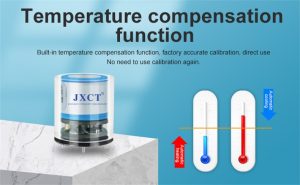Air pollution is a global problem that affects millions of people every day. The World Health Organization estimates that outdoor air pollution is responsible for 4.2 million premature deaths each year. Indoor air pollution is equally concerning, with many people exposed to harmful pollutants in their homes and workplaces. Monitoring air quality is essential to protecting public health and the environment. Gas sensors are a promising technology that can help us achieve this goal.

Gas sensors are devices that detect the presence of gases in the air
They work by measuring the concentration of a specific gas in the surrounding environment. Gas sensors can detect a wide range of gases, including carbon monoxide, nitrogen dioxide, ozone, and volatile organic compounds (VOCs). These gases are known to be harmful to human health and the environment, and their detection is essential for monitoring air quality.
Gas sensors are becoming increasingly popular for air quality monitoring
due to their low cost, small size, and high sensitivity. They can be deployed in large numbers, providing a detailed picture of air quality in a particular area. Gas sensors can also be integrated into other devices, such as smartphones, to provide real-time air quality data to users.
One of the main advantages of gas sensors is their ability to detect low concentrations of pollutants
This is essential for monitoring air quality in urban areas, where pollution levels can vary greatly depending on the time of day and weather conditions. Gas sensors can also detect pollutants in indoor environments, where people spend most of their time. This is particularly important for vulnerable populations, such as children and the elderly, who may be more susceptible to the harmful effects of air pollution.
Gas sensors are also useful for identifying the sources of pollution. By detecting the specific gases emitted by different sources, such as traffic or industrial activities, gas sensors can help identify the most significant contributors to air pollution. This information can be used to develop targeted strategies to reduce pollution levels and improve air quality.
Despite their many advantages, gas sensors also have some limitations. They can be affected by environmental factors, such as temperature and humidity, which can affect their accuracy. Gas sensors also require regular calibration to ensure their accuracy over time. Additionally, gas sensors can only detect a limited number of gases, and they may not be able to detect some of the more harmful pollutants, such as particulate matter.

In conclusion, gas sensors have great potential for monitoring air quality and protecting public health. They are a low-cost, high-sensitivity technology that can be deployed in large numbers to provide detailed information about air pollution levels. Gas sensors can also be integrated into other devices, such as smartphones, to provide real-time air quality data to users. While gas sensors have some limitations, they are a promising technology that can help us achieve our goal of clean, healthy air for all.
 : +86 155 8830 2704
: +86 155 8830 2704 : jxdziot@gmail.com
: jxdziot@gmail.com
